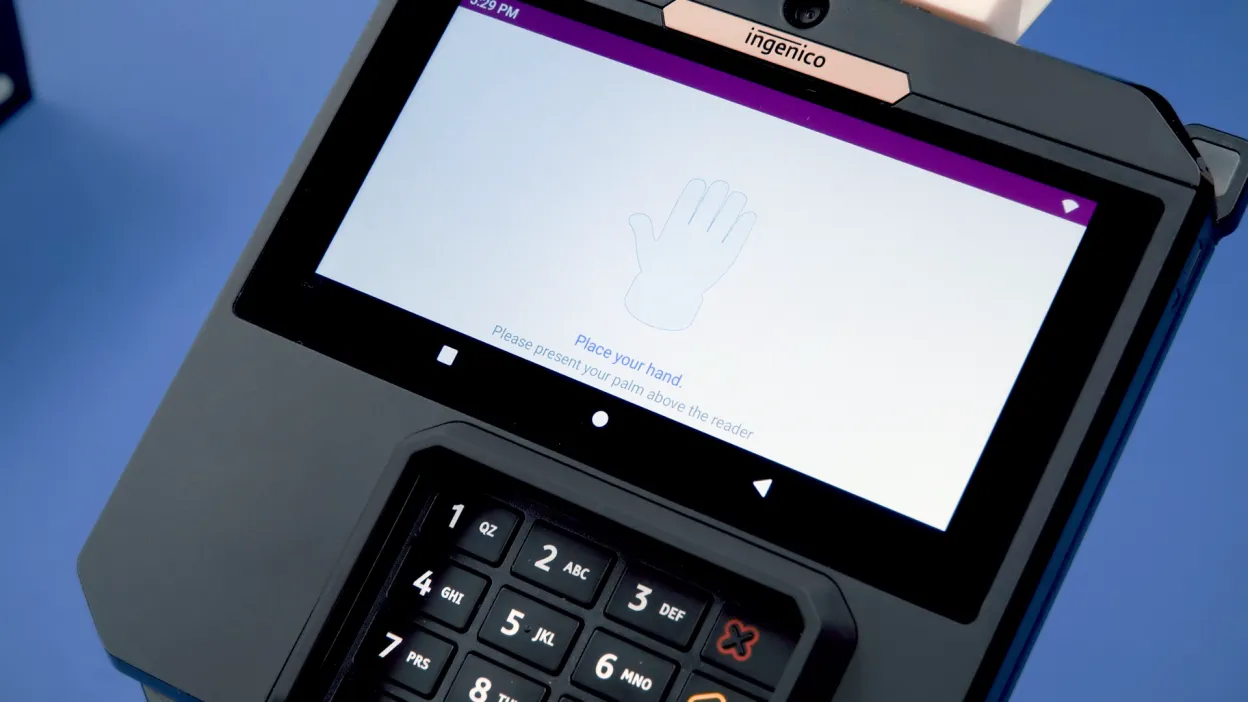Biometric payments with palm vein identification is fast, secure and convenient.
A common challenge persists in payments: verifying that the person using the payment method is the person authorized to use the payment method. Biometric payments, such as using a fingerprint, facial scan, or palm identification to pay, can solve this pain point.
Payment security and fraud prevention are critical. However, each time the payments industry strengthens authentication processes, it seems that fraudsters find ways around them. As a result, merchants never quite know if the person dipping the payment card in the card reader is the account holder or if the person using the account at a kiosk is the person whose account is covering the transaction.
At the same time payment technology companies are looking for ways to strengthen security, they’re working to meet consumer demands to remove friction and provide merchants with solutions that improve customer experiences. Optimizing CX is key to customer loyalty and revenues. PwC research has found that 73 percent of consumers say experience is an important factor in purchasing decisions – and 43 percent would pay more for positive experiences. Quick, easy transactions can cap off a great customer experience and pave the way for additional purchases in the future.
The Advantages of Biometric Payment
Instead of using a PIN, signature, CVV, ZIP code, or another method of verifying a consumer’s identity, biometric payment authentication uses peoples’ unique physical characteristics.
Palm vein identification, for example, is one of the most accurate forms of biometric identification. A payment system leveraging this form of authentication encrypts and tokenizes images of consumers’ palm vein patterns and their account information. It’s a less intrusive method than other options like facial or iris scans, and it’s easier to implement and operate. When it’s time for consumers to pay, they move the palms of their hands over a near-infrared (NIR) sensor to identify themselves. Then the system initiates the transaction.
Biometric payments with palm vein identification make payment experiences:
- Quick and convenient
Consumers don’t have to fumble for a payment card, remember a PIN, or unlock a smartphone and open a mobile wallet. Checkout just requires a fast and accurate biometric scan.
- Secure
Consumers sometimes lose their payment cards, and hackers can steal account data. Even other forms of biometric authentication, such as facial recognition and fingerprints, run risks of fraud. However, palm veins under the skin are virtually impossible to replicate, and the image can’t be captured without a person’s knowledge.
- Hygienic
Customers don’t have to touch the scanner – they hold their hand above it. This form of contactless payments will provide added comfort to consumers who are now more aware of health safety best practices to avoid transmissible diseases.
- Flexible limits
Contactless cards normally have a relatively low limit on transaction amounts as a hedge against fraudulent purchases if the card is lost or stolen. However, with biometric authentication, there wouldn’t have to be a cap on transaction amounts since only the consumer could be making the purchase. This can enable merchants to see higher average tickets and increased revenues.
- Cool
Don’t discount the “cool factor,” which can entice consumers to try and adopt this payment method. Early adopters, in particular, will benefit from the novelty of this emerging technology.
The Stage is Set for Adoption
Biometric integration with smartphones and tablets has increased consumers’ familiarity with the technology. Moreover, many people use a fingerprint or facial scan to confirm their identities before they use mobile wallets to pay.
Biometric payments, such as palm vein identification, can provide consumers with the same convenience and security in-store.
Contact us to learn more about Ingenico and Fujitsu’s palm vein identification payment solution.











